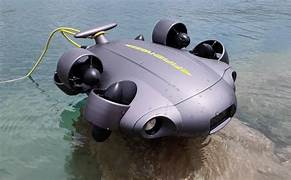How Submarine Drones Are Revolutionizing Ocean Exploration
The vast oceans cover more than 70% of our planet, yet we have explored only a fraction of them. The deep sea remains one of the last frontiers of Earth, filled with mysteries, undiscovered species, and hidden geological wonders. Thanks to advancements in robotics and artificial intelligence, submarine drones—also known as underwater drones or autonomous underwater vehicles (AUVs)—are transforming ocean exploration like never before. These high-tech machines are helping scientists, industries, and governments unlock the secrets of the deep, making ocean research safer, faster, and more efficient.
Submarine drones are robotic vehicles designed to operate underwater without a human pilot. They come in different types, including remotely operated vehicles (ROVs) that are controlled via tethered cables and autonomous underwater vehicles (AUVs) that navigate independently using pre-programmed instructions. Some advanced models combine both technologies, offering hybrid capabilities. These drones are equipped with cutting-edge tools such as high-resolution cameras, sonar systems, robotic arms, and environmental sensors. With these features, they can perform tasks that were once impossible or too dangerous for human divers.
One of the biggest challenges of deep-sea exploration is the immense pressure and darkness found at extreme depths. Traditional submersibles are expensive and require human crews, limiting their exploration time. However, submarine drones can dive thousands of meters below the surface for extended periods, reaching places where no human has ever gone. They provide detailed maps of the seafloor, revealing underwater mountains, trenches, and hydrothermal vents that offer clues about Earth's geological history. Scientists also use submarine drones to study marine life and monitor environmental changes. These drones can track ocean currents, measure temperature and salinity, and even collect water samples for analysis. This data is essential for understanding climate change and its impact on marine ecosystems. For instance, AUVs have been deployed to monitor coral reef health, detect pollution, and track endangered species without disturbing their natural habitats.
The deep sea is home to thousands of unknown species, many of which have adapted to extreme conditions such as high pressure and total darkness. Submarine drones have captured breathtaking footage of bioluminescent creatures, deep-sea jellyfish, and giant squid—organisms rarely seen before. By exploring these remote areas, scientists continue to discover new species that could provide insights into evolution and even new medical treatments. Shipwrecks, ancient submerged cities, and lost treasures lie beneath the ocean’s surface. Submarine drones have been instrumental in uncovering historical artifacts and sunken vessels without the risks associated with human diving. Advanced imaging technology allows archaeologists to create 3D models of underwater ruins, helping preserve history without disturbing fragile sites.
Submarine drones also play a crucial role in locating sunken ships, missing persons, and downed aircraft. Their ability to navigate through strong currents and extreme depths makes them invaluable in search-and-rescue operations. For example, these drones were used to locate the wreckage of the missing Malaysian Airlines Flight MH370 and Titanic’s resting place. The ocean floor is rich in valuable minerals such as gold, silver, and rare earth elements. Traditional mining methods are impractical at extreme depths, but submarine drones offer a solution. They can map deep-sea mineral deposits and assess their potential for extraction. While deep-sea mining remains a controversial topic due to its environmental impact, these drones provide a non-invasive way to study and monitor undersea resources.
Governments and military forces worldwide are deploying submarine drones for surveillance, mine detection, and border security. Unlike crewed submarines, these drones can operate covertly for extended periods, gathering intelligence without putting human lives at risk. This technology is enhancing naval operations and securing maritime territories. The future of submarine drones looks promising as technology continues to advance. Innovations in artificial intelligence, energy storage, and communication systems will enable these drones to operate autonomously for longer durations and at greater depths. Scientists are also developing swarm technology, where multiple drones work together to map the ocean in real time, significantly improving data collection.
Furthermore, space agencies like NASA are studying underwater drones as a model for exploring alien oceans, such as those beneath the icy surface of Jupiter’s moon, Europa. This means submarine drone technology could one day help us search for extraterrestrial life beyond Earth. Submarine drones are revolutionizing ocean exploration by providing safer, more efficient, and cost-effective solutions for studying the deep sea. From unlocking geological mysteries to discovering new species, these robotic marvels are expanding our understanding of the world’s oceans. As advancements in underwater robotics continue, we can expect even more groundbreaking discoveries that will shape the future of marine science, conservation, and industry. The ocean's depths are no longer out of reach, thanks to the incredible capabilities of submarine drones.
.png)






Leave a Comment
Your email address will not be published. Required fields are marked *